I was using Hypnodyne ZMax for a hundred of nights and recently i notice some issues with hydrogel electrodes working for only for 2-3 days in contrast to ~3 weeks of work before. Since they cost some money (15 EUR each) and require manual ordering / shipping I decided to move forward to get my OpenBCI PSG pipeline finalized.
Introduction
After having a talk with Frederik Weber (spisop.org) i got more knowledge on sleep / PSG. OpenBCI with gold cup electrodes seems to be in a "gold-standard" PSG range. He made a cool home PSG guide which i've read multiple times to understand how to get everything setup and this night I had some success.
Before talk i was planning to compare ZMax vs OpenBCI to validate it for myself, but he told me about this validation study with 1000+ nights on different populations where ZMax has show good agreement vs PSG hypnogram. Also it was shown that some of ZMax EEG derived features not comparable to PSG, but this doesnt seem to affect final hypnogram which was autoscored by Dreamento which relies on YASA. So i decided not to spent my time on comparing OpenBCI vs ZMax and just sticked to ZMax. But after these issues with electrodes i've changed my mind and thinking about switching to OpenBCI for daily longterm sleep tracking.
Preliminary Results
First of all i would like to learn how get good EEG / hypnogram data for ObenBCI, at least at ZMax level. And for first night i've used them both. Setup
- ZMax headband which gives F7-Fpz and F8-Fpz EEG channels.
- OpenBCI Cyton with gold-cup electrodes and Ten-20 conductive paste
OpenBCI montage were not standard:
- Pz as ground
- T3 as reference
- 3 channels: T4-T3, O1-T3, O2-T3
AASM montages are different: "recommended EEG montage (F4-M1, C4-M1, O2-M1) and acceptable EEG montage (Fz-Cz, C4-M1, Oz-Cz)."
- F area was already occupped by ZMax
- C area have a lot of hairs and it takes more effort to setup it
- M (A) mastoids require some kind of fixation with tape
Just to remind 10-20 System:

Source

Source
Usually lower half of my head are being cut to zero, so line Lobe - T3 - O1 - Pz - O2 - T4 is free from hairs and seems to be easiest to do a montage. Also using a simple elastic headband allows to avoid using of any tape thus lowering chances of skin irritation and provides enough cover to make electrodes stay in place full night.

Actually to get acceptable hypnogram 1-channel EEG without EOG/EMG (chin) seems to be enough, so i plan to use less electrodes in a future.
ZMax setup takes about 30-60 secs to be worn and start recording. Setting up OpenBCI takes longer but not too much, about 2-3 mins to take cup electrodes, get paste, put it on place and cover with headband. It also takes about a 1-2 minutes to turn on board, start OpenBCI GUI at my mac, start session, load hardware settings, start streaming, take off dongle. I think after i get more experience it will not take longer than 4-5 minutes and look at it as a sleep ritual :)
Lets look what have i got for that night. Small remark: OpenBCI turned off 20 minutes before i woke up because I forgot to charge battery, this is why OpenBCI data just a bit shorter than ZMax.
Here is ZMax spectrograms / hypnogram (YASA):

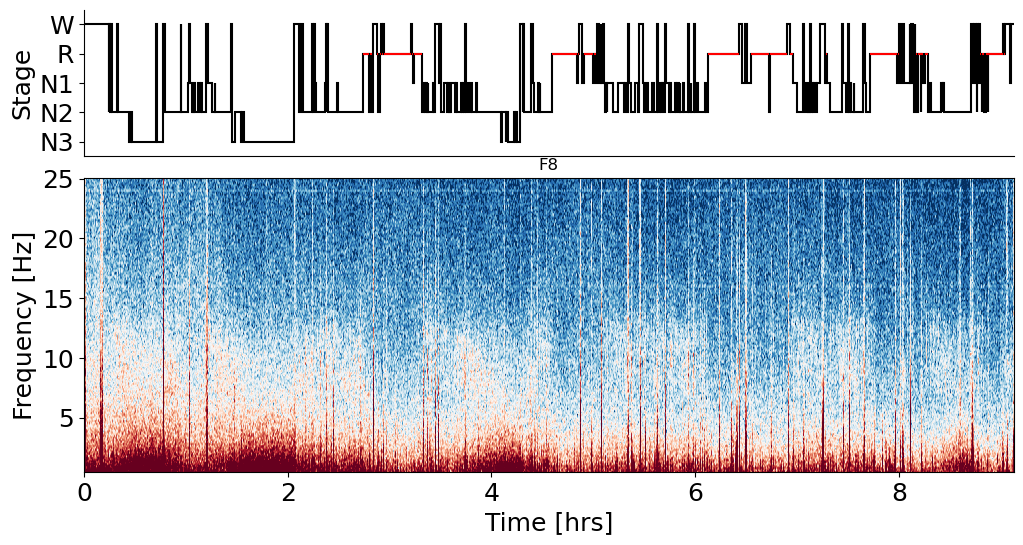
F7-Fpz and F8-Fpz seems to have good agreement. First short REM segment werent detected. There a lot of micro-awakenings (which were also noticed by QuantifiedScientist). Alpha waves (10Hz) during sleep onset not seen (but sometimes can be detected by using XRay filter in ZMax HDScorer). Some noise harmonics can be seen at 24 and 16Hz.
Here are OpenBCI spectrograms / hypnograms. OpenBCI session were started few minutes before ZMax session, this is why there are longer awake at start. I didnt aligned results, because this is preliminary rough comparison:
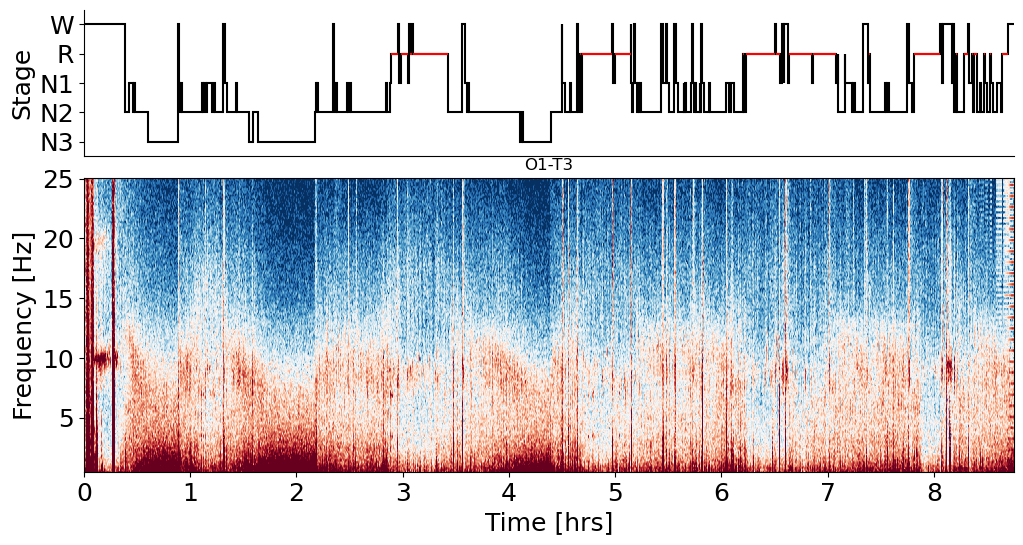
O1 - T3 channel Delta (< 4Hz) range looks pretty similar to ZMax, but upper ranges seems to have better representation of brain activity (might be due different electrode position). There a powerful Alpha detected at start of sleep onset! First REM segment also missed, like in ZMax data. There are less micro-awakenings, like x2 less. So it seems that OpenBCI placed at O1-T3 seems to give just a bit better representation of brain activity compared to ZMax F7/F8, but O1-T3 still missed 1st REM.
Lets look at other channel:
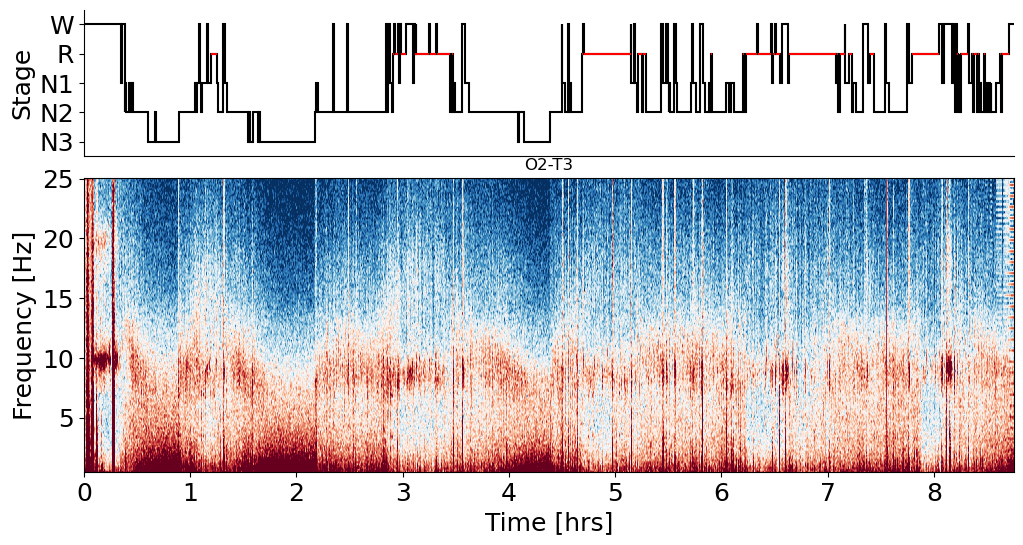
O2 - T3 seems to have more signal power in alpha band and detected more micro awakenings. The good thing is that it didnt miss first REM segment! Thus it seems to correctly detect all sleep cycles and seems to have better signal in Alpha range.
Last channel to look at:

T4-T3 channel seems to detect even more REM in a first segment. For sure it have less power in Alpha range compared to O1 / O2 but this is expected. Anyway it seems to outperform ZMax located at F7/F8.
Second night i've decided to sleep with OpenBCI only but reproduce ZMax montage with additional channel:
- Fp2 as ground
- Fpz as ref
- 3 channels F7 - Fpz, F8 - Fpz, Oz - Fpz
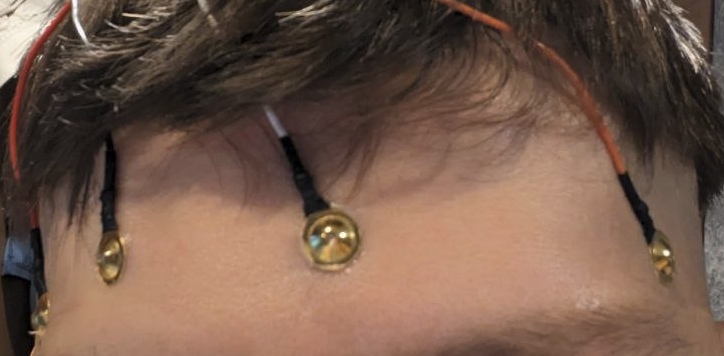
Lets look at F7 / F8 from OpenBCI:
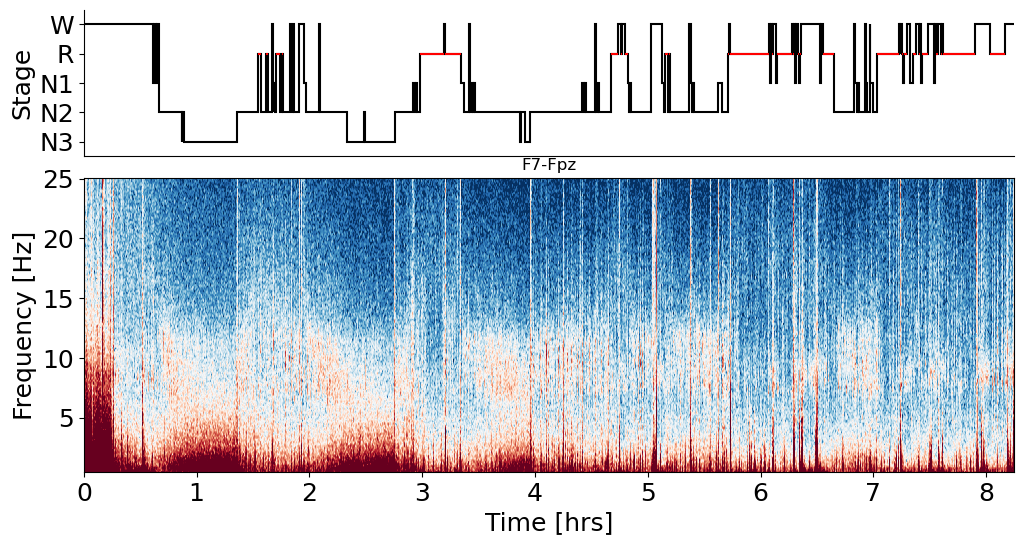
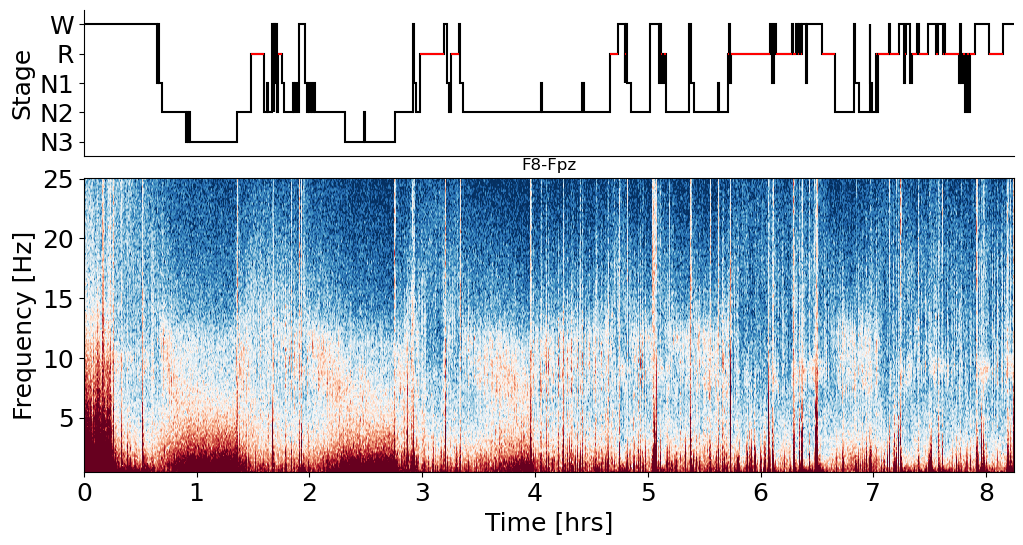
Looking at OpenBCI data i can conclude that F8 / F7 looks pretty similar to ZMax, maybe just a bit better. Differences in spectrograms during first night was mostly due to electrode positions, not the device itself, at least at spectrogram level (need to look at slow waves, spindles etc and compare them also).
Lets look at additional Oz - Fpz channel:
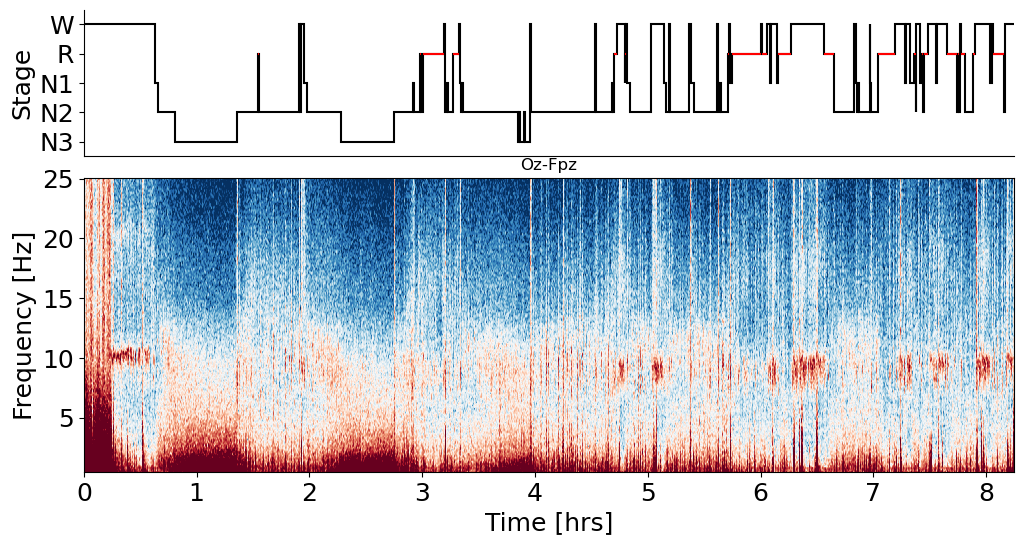
Again, we can clearly see that Occipital area provides better representation of alpha activity in comparison with F7 / F8. But this night Oz - Fpz was able to detect only small part of first REM segment, thus maybe not optimal. During first night T4 - T3 and O2 - T3 detected first REM, O1 - T3 and ZMax's F7 / F8 was not able to detect it at all, so it seems O1 / Oz is not optimal zone for REM detection and O2 / T4 might be better. For sure, i may be wrong due to small dataset, i'm planning to sleep a few nights more to find optimal minimalistic setup to catch most important EEG features.
Lets look at raw EEG data during N3:

Dont look at scale, these are not uV but raw ADC values. Notch 50Hz filter and then 0.3Hz - 25Hz bandpass filter was applied for most in EDFBrowser to present EEG data (i think i forgot to do that in 1 or 2 pictures).
Slow waves can be clearly seen on O2 / O1, but T3 - T4 doesnt look great for them. Lets look at night 2 with different locations:

Slow waves can be clearly seen from all F locations.
During N2 sleep spindles occurs:
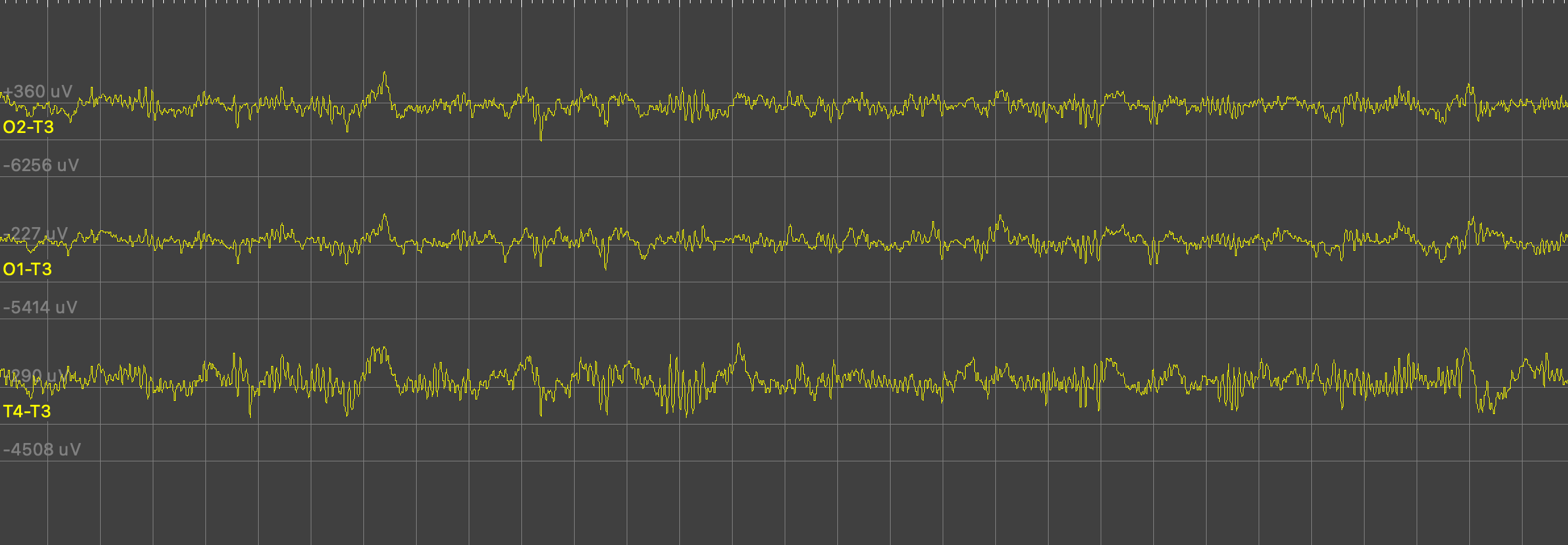
During first night T4-T3 seems to reveal spindles better.

During second night Oz-Fpz seems to better catch spindles compared to F7 / F8.
Lets look at sleep onset:
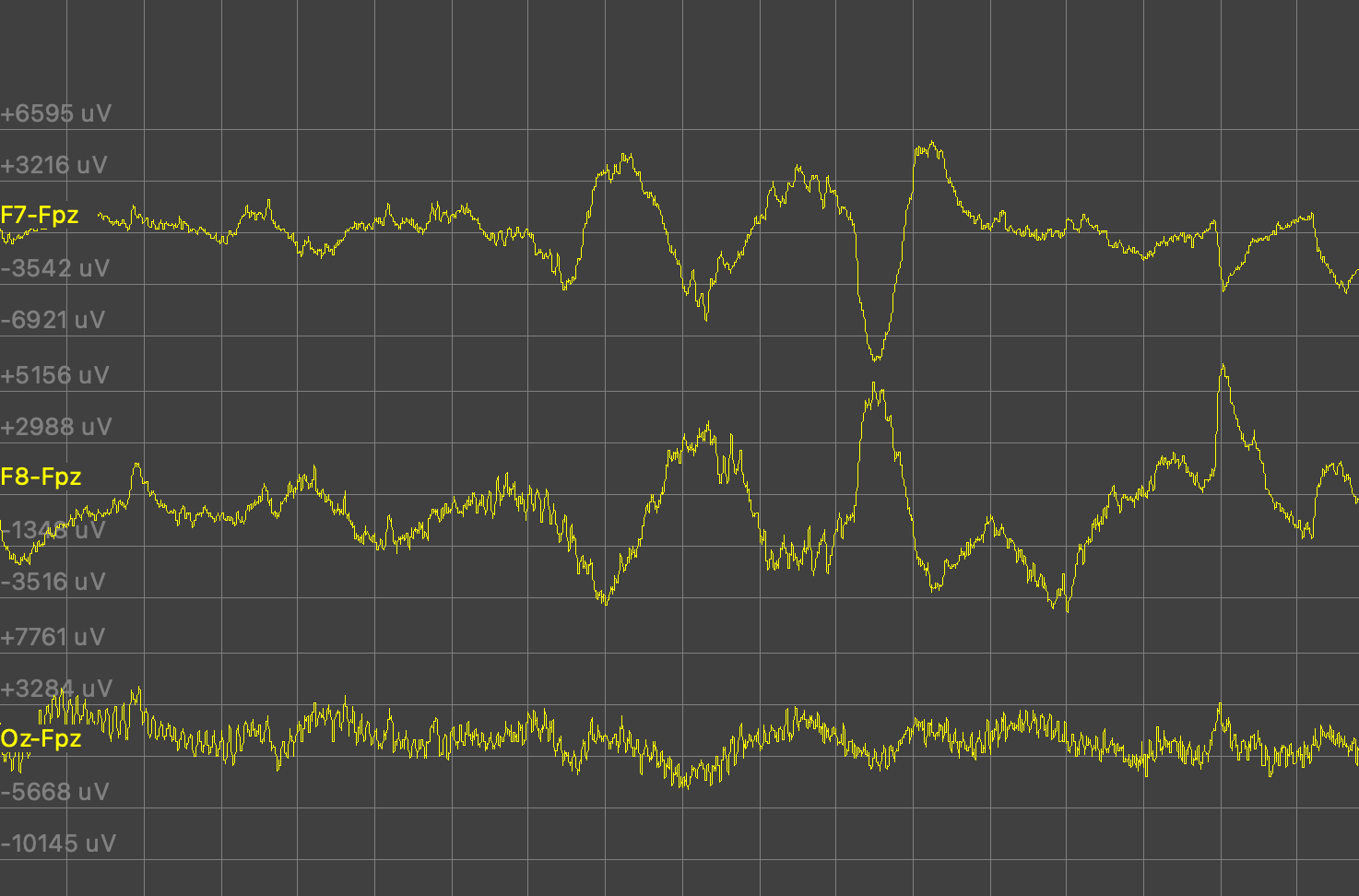
Eye movements pass to F7 / F8 and can be clearly seen and may help in scoring REM. Oz-Fpz reveals alpha rhythm (mostly due O area) which is not clearly seen from F7 / F8.
3rd night i slept with OpenBCI with this montage:
- Fpz as ground
- T3 as reference
- 4 channels: T4-T3, O2-T3, F7-T3, F8-T3

Lets look at spectrograms:
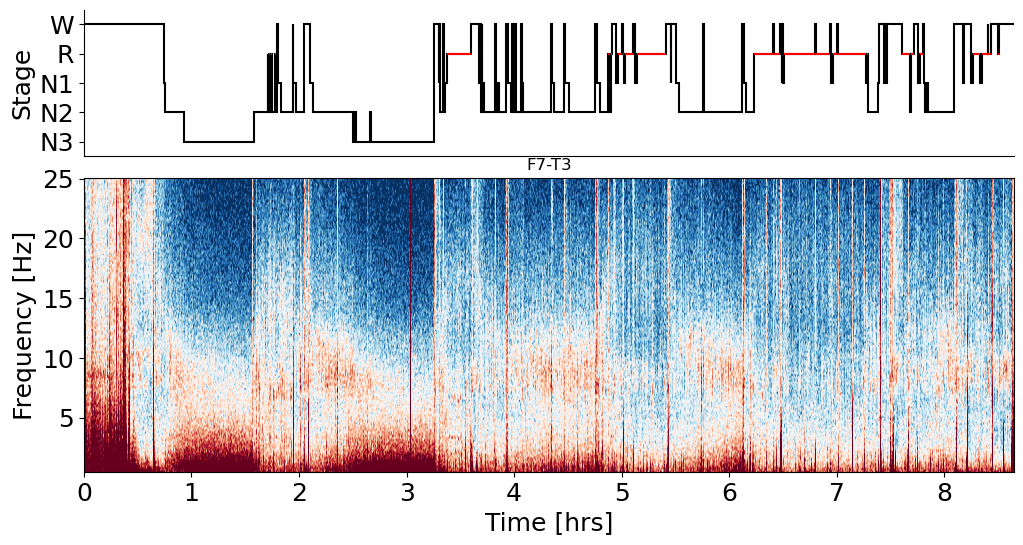

F7 and F8 referenced to T3 seems to capture a bit more alpha activity versus montage where Fpz is a ref for both OpenBCI and ZMax. Thats expected, because F7 / F8 - T3 line intersect mostly frontal and middle part of brain, but most prominent alpha originates from occipital area.

O2 - T3 capture alpha pretty well, in agreement with first night.
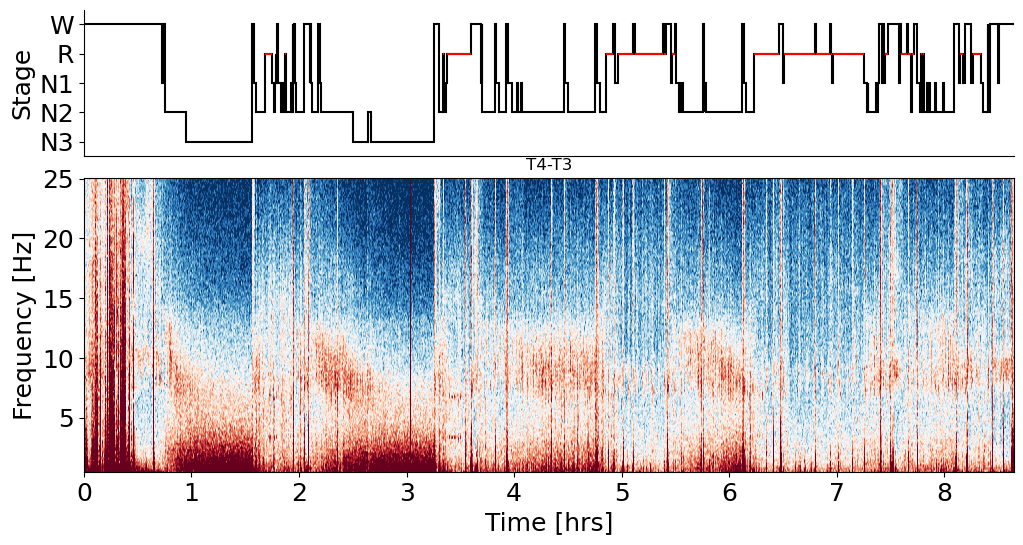
T4 - T3 doesnt seem to add more information to F8 - T3 and O2 - T3 at least at spectrogram level.
Lets explore raw EEG:
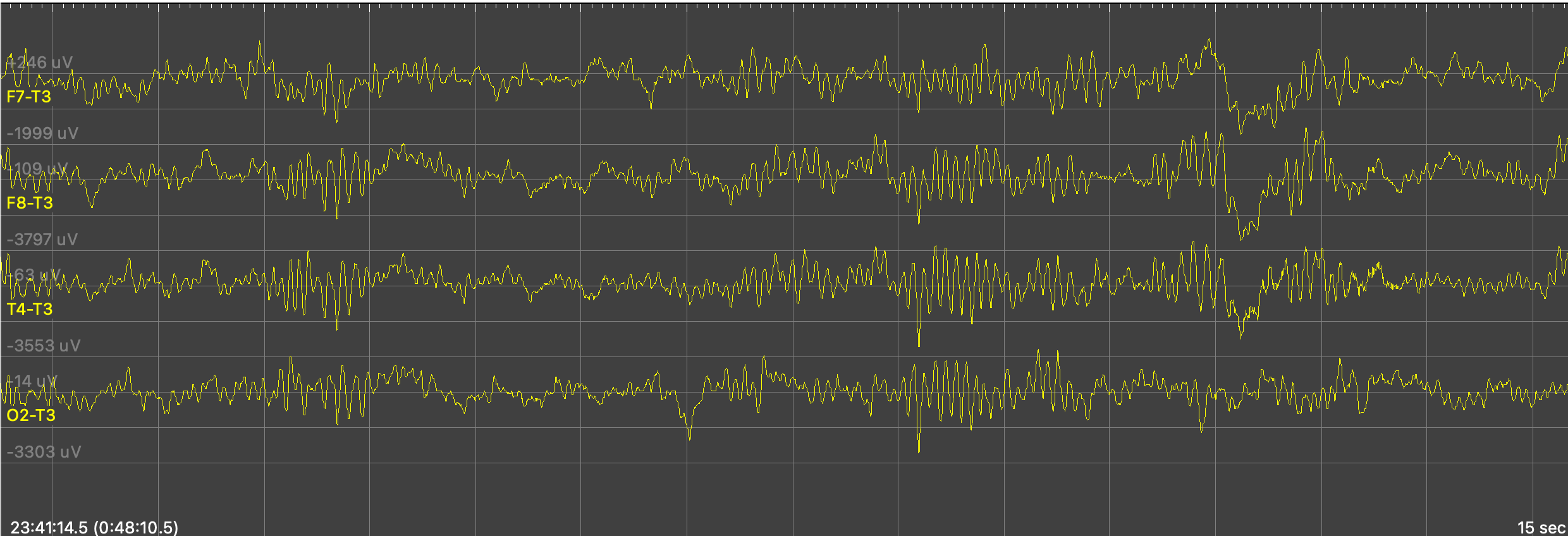
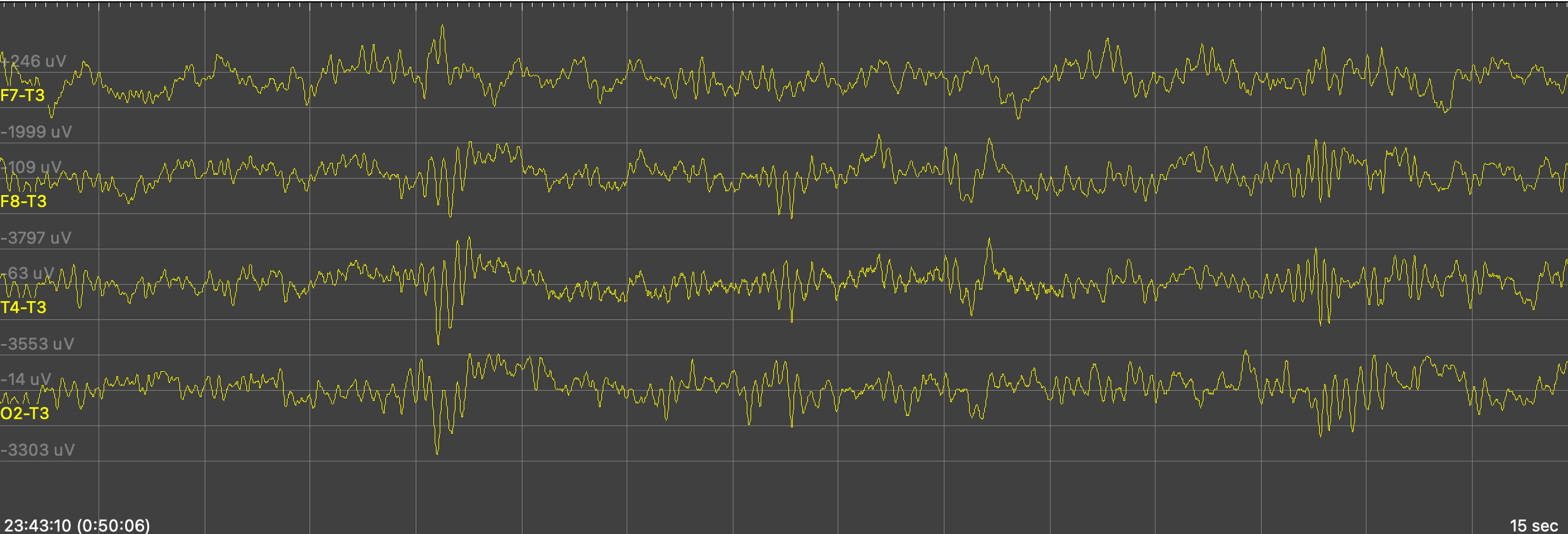
F7 and F8 catch some spindles, but T4 and O2 seems to catch them better (bigger amplitude etc). T4 seems to reveal them better, might be because usually C area (upper) is a best place to catch spindles and T3 - T4 line intersect C area.

F7 catch spindles not well might be because F7 and T3 are on same side of brain (left) and not too far from themselves being able to capture less brain activity in contrast to F8 which catch spindles pretty well, might be because F8 and T3 on different sides and their line intersect C area. So F8 - T3 and T4 - T3 seems to catch spindles better than F7 - T3 or O2 - T3. It seems that minimal setup may include O2 - T3 for alpha and F8 - T3 spindles. Also F8 should offer better slow waves in comparison to T4 and O2.
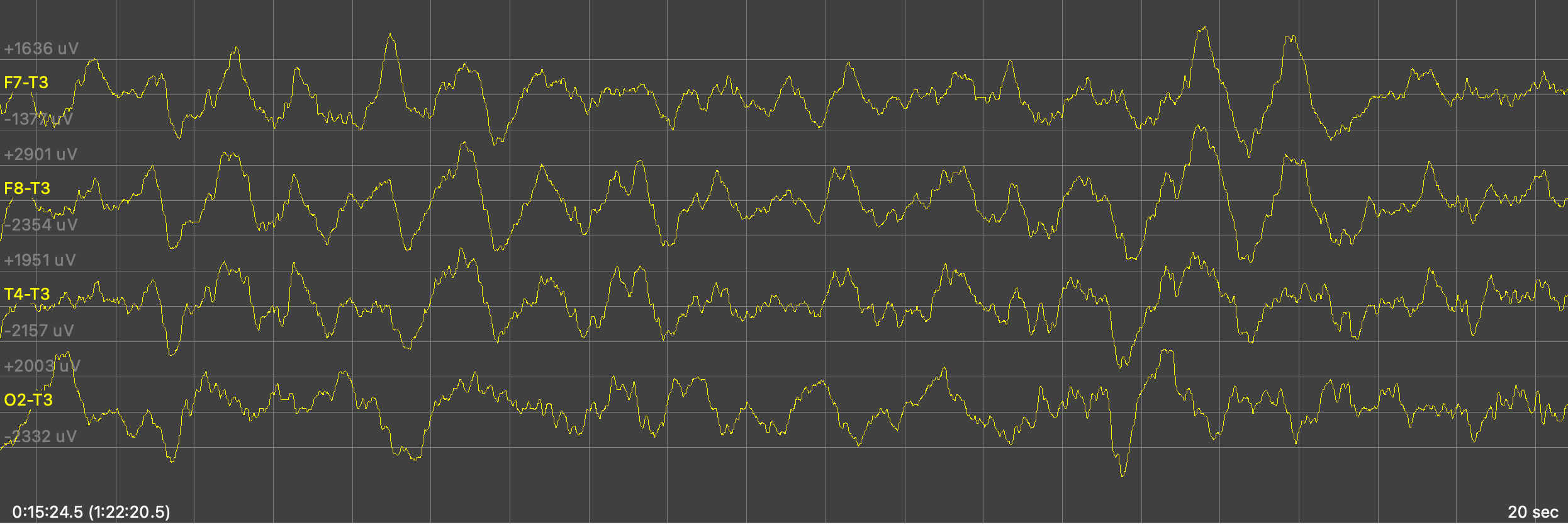
This seems to be reasonable - slow wave activity originates mostly from frontal area (F) and F7 / F8 seems to do job pretty well. T4 - T3 seems to perform a bit worse but still fine and O2 seems to catch less slow waves.
F7 slow waves amplitude seems to be lower than F8 due to same reason as before (F8 - T3 intersect a lot bigger part of the brain because located on different sides). So F8 seems to be best one to catch slow waves so F8 - T3 seems to be a good candidate, because it also catch spindles well.
But having F7 and F8 simultaneously offers additional value - eye movement detection, due to eye muscle activitity passing into EEG signals at F7 and F8. Lets confirm that:
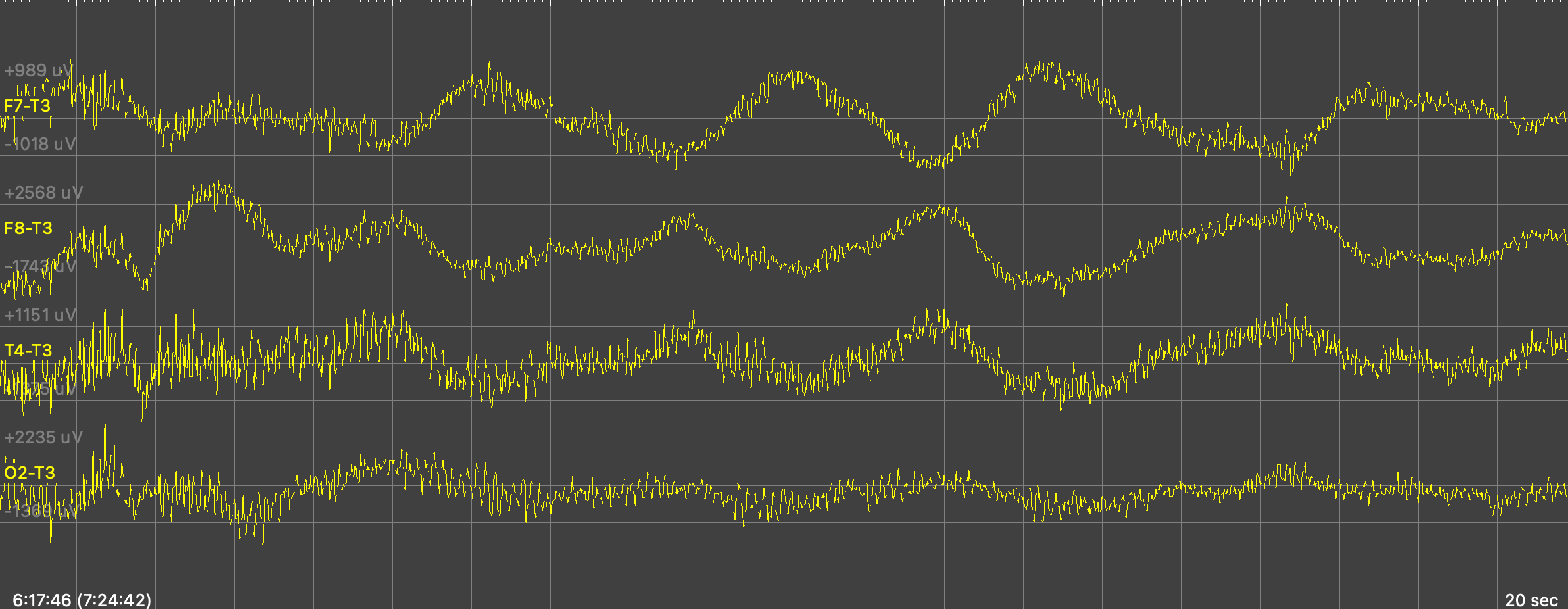
Here REMs can be clearly seen as negatively correlated simultaneous waves at F7 and F8. T4 - T3 and O2 - T3.
Here is another example (from different night where i did 5 channels):
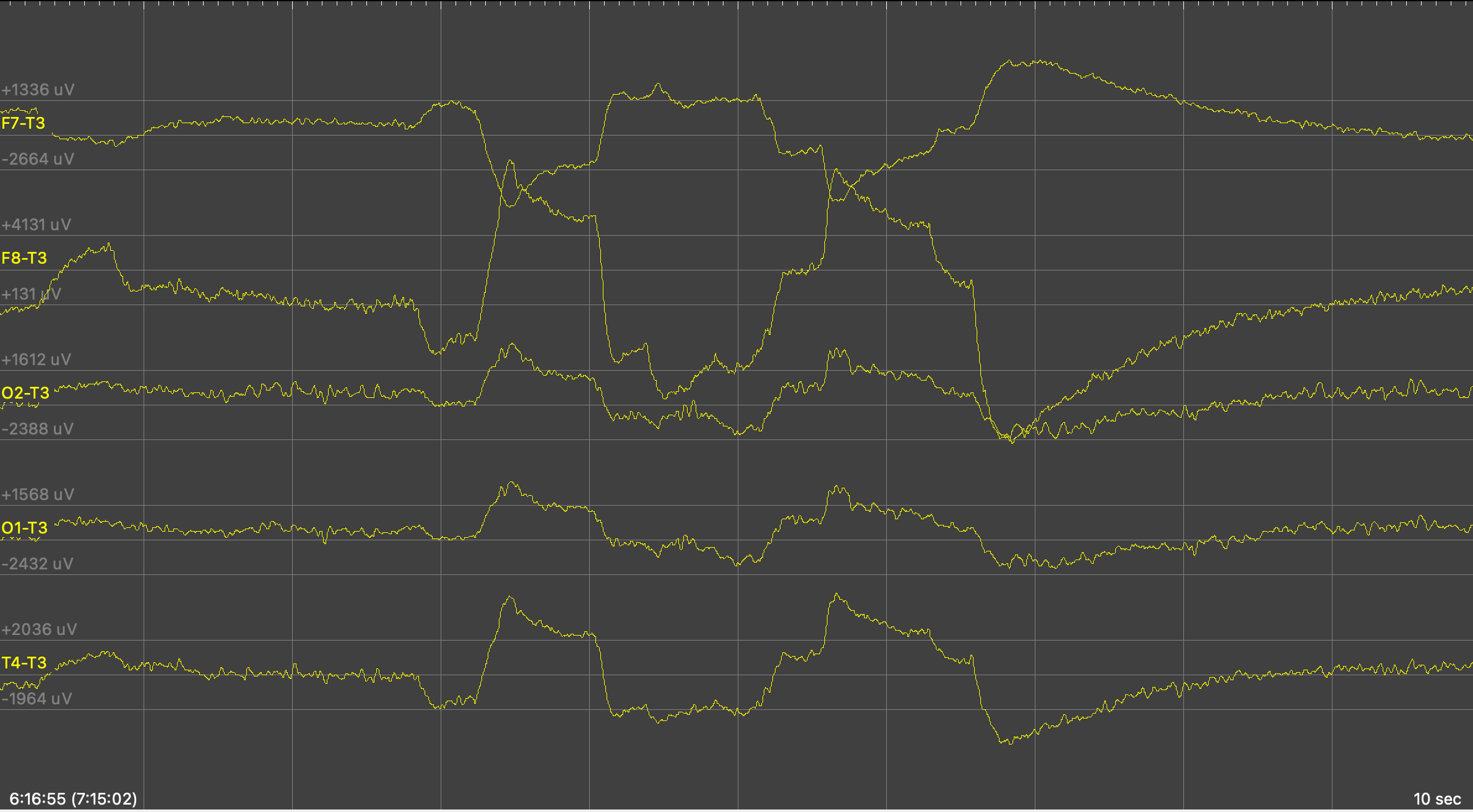
REMs can be clearly seen as negatively correlatied waves from F7 and F8 . Also it is clear that eye movements reach other channels as well and maybe result in misenterpretation. So, F7 channel is still valuable and adds useful information.
I dont see a lot of added value from T4 - T3 when i already have F7+F8+O2, so i would go next nights with F7 - T3, F8 - T3 and O2 -T3.
Forth night spectrograms (i forgot to check batteries, so the last hour was not recorded):

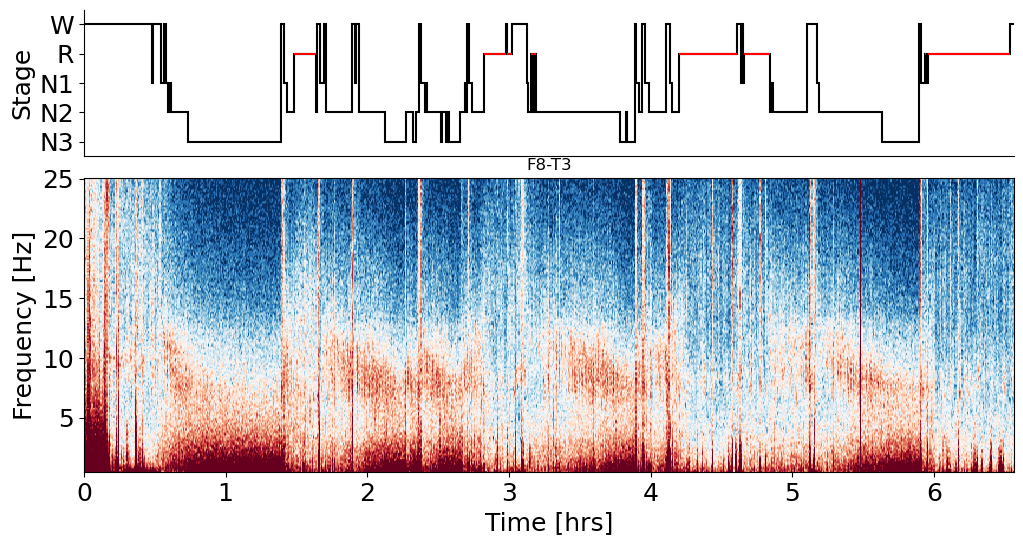

This night doesnt add much to previous nights, F7 channel doesnt seems to add a lot of value, just can be used to detect REMs in a future, but for now if someone want to minimize electrodes it can be skipped and F8 - T3 with O2 - T3 will be enough. O2 will reveal alpha and F8 reveal slow waves. Both intersect C area enough to reveal spindles. Going futher seems to like a decision between F8 - T3 and O2 - T3, both a different enough to lose some information no matter that choice and in that case i would go with T3 - T4. T3 - T4 seems to be a balanced choice: better capture of Alpha compared to F8, and good enough for spindles and slow waves. But current montage is fine for me, so i keep using F7, F8, O2 and T3 as ref.
Fifth night:
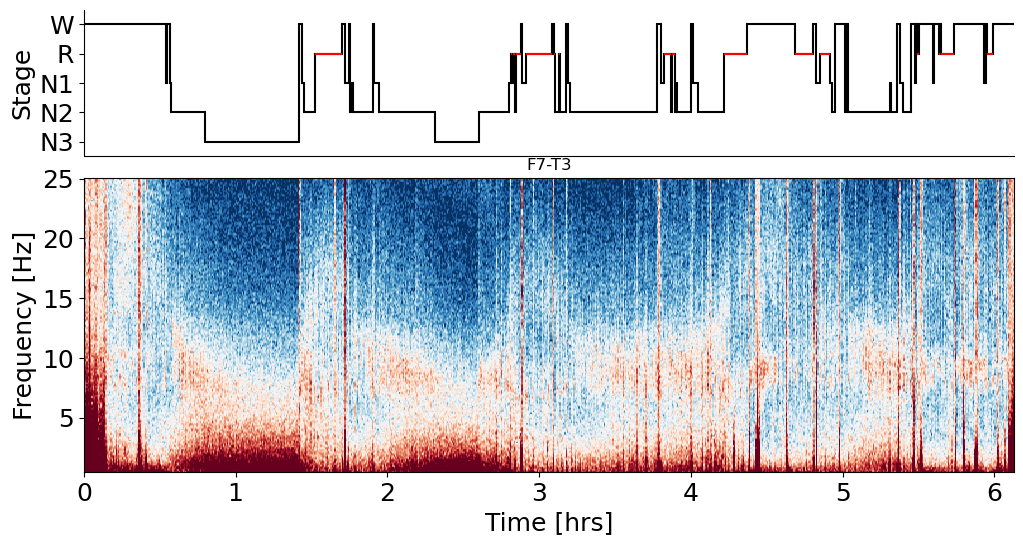
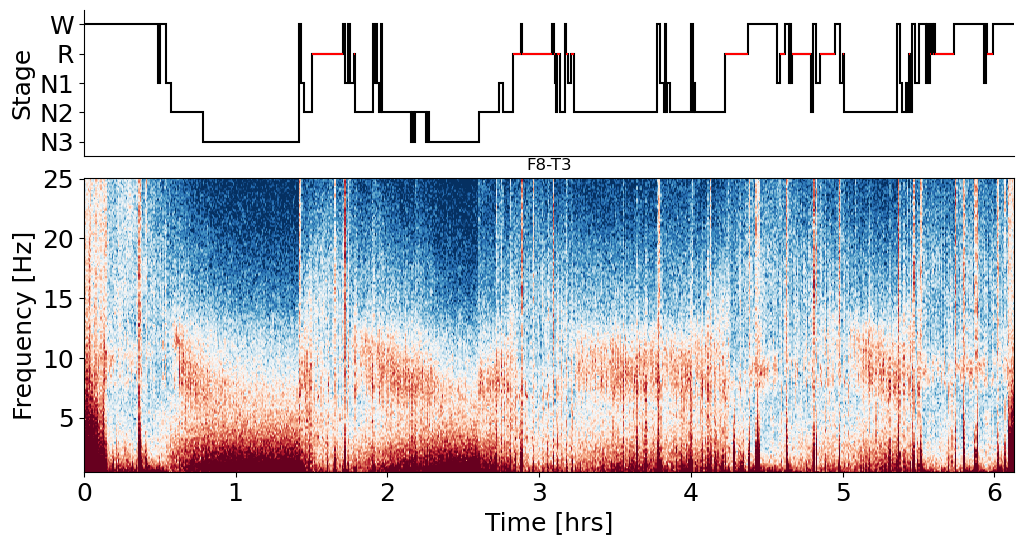
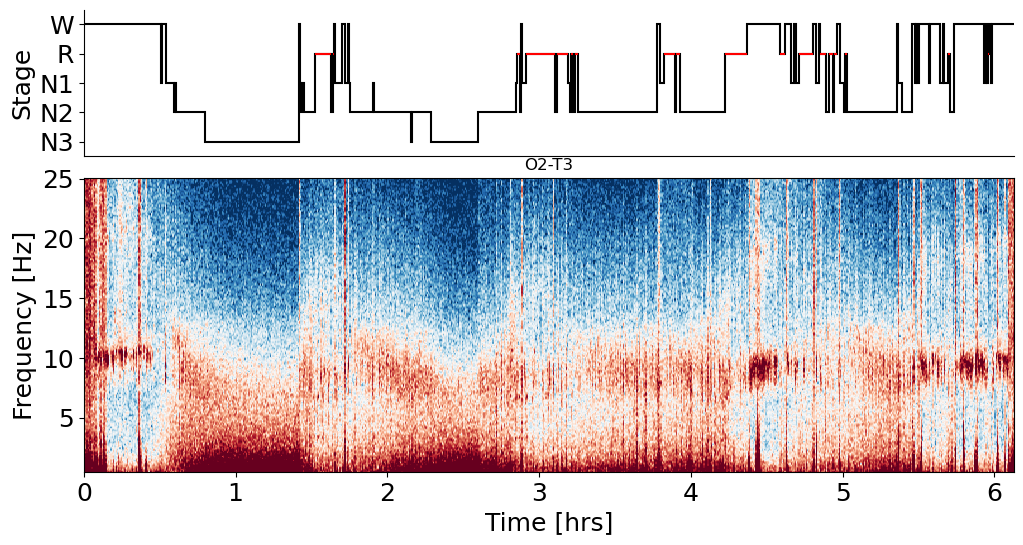
This night for some reason i woke up too early and wasnt able to sleep back. This can clearly be seen at O2 channel with strong Alpha. First REM clearly detected
Lets quantify slow waves and spindles and compare different channels:
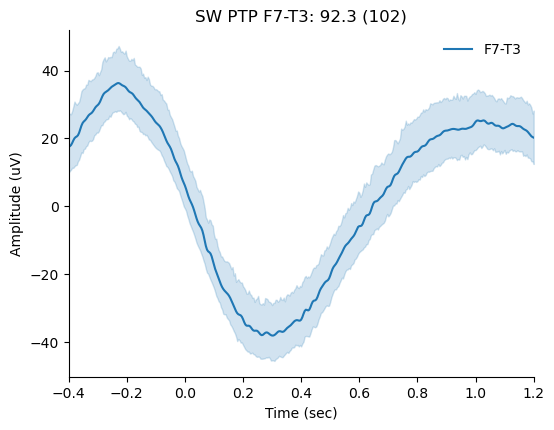
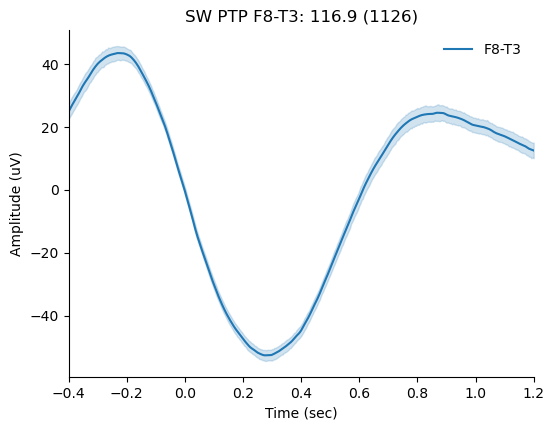
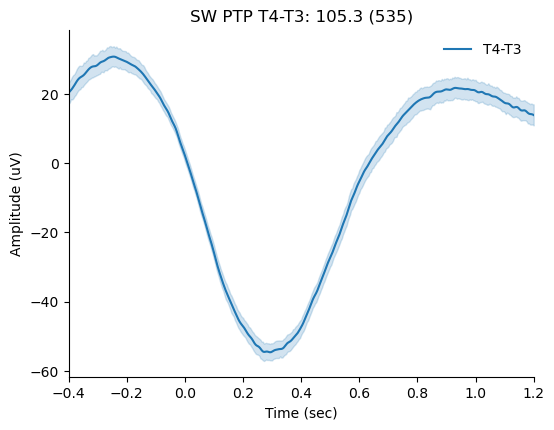

Looking at channels we can see that F8-T3 have maximum amplitude (116.9uV) and detected more slow waves than other channels (1126). F7 seems have lower amplitude and less waves due to shorter distance to ref, as a result most of waves didnt reach YASA default detection threshold. F7 also have wider confidence interval in comparison to F8, not sure why, but i get similar results for ZMax F7 / F8. Also there is strange pattern at O2-T3 at the end of wave. But anyway we can see that F8 - T3 seems to be preferred channel for slow wave detection (applies only to my specific montage). These results were expected, so nothing new for me.
Spindles usually best detected at C area, but seems i do not target it, then T3 - T4 should be closest one:
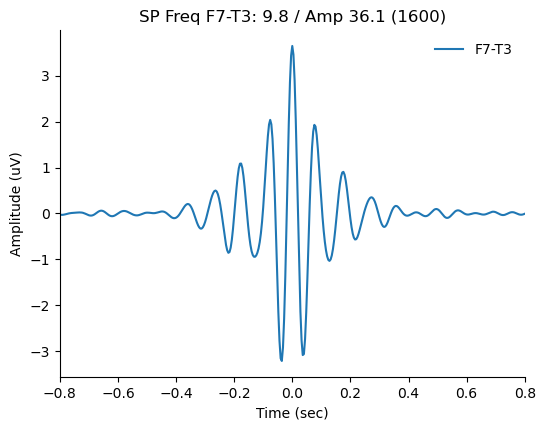
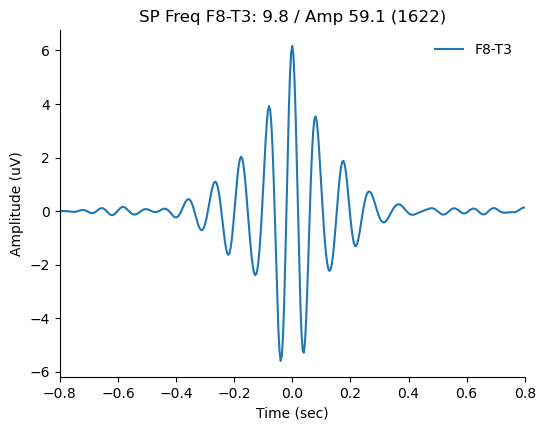
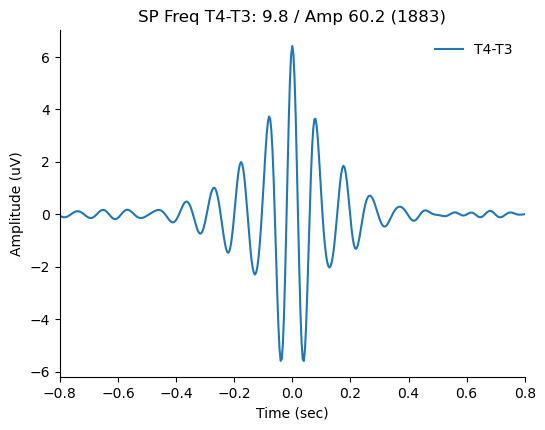
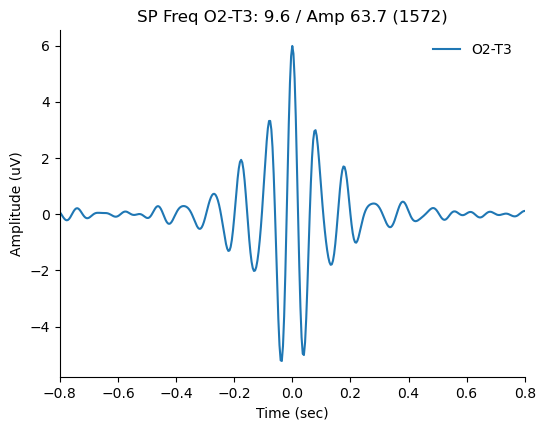
As expected T3 - T4 detected more spindles than other channels - 1883. F7 again had smaller amplitude. F and O channels seems to detect 10-15% less spindles.
Since i can build hypnogram for each channel separately, i can combine different information to build final hypnogram:
- O2-T3 have powerful alpha rhythm which helps to better detect Awake and maybe N1
- F8-T3 seems to be better for slow waves detection and as consequence for deep (N3) sleep
- T4-T3 seems to be better for spindles detection and as consequence for light (N2) sleep
- Not sure which one is better for REM. F7 and F8 contain eye muscle movement activity and potentially may be better than other channels.
This seems to be in align with scientific evidence:
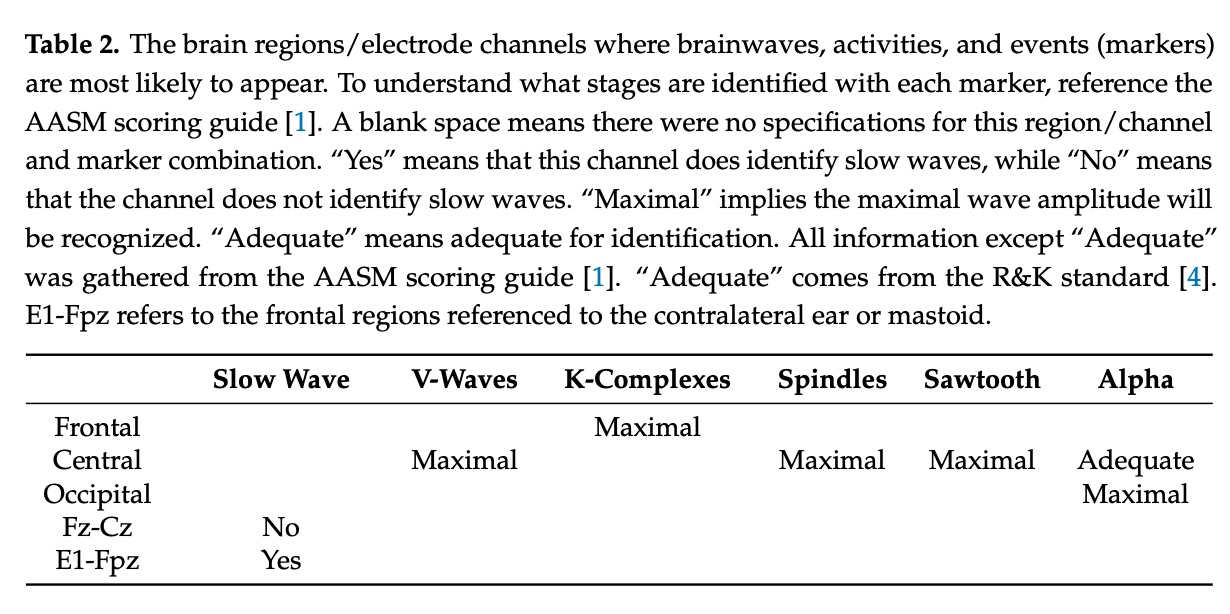
Central (C) region seems to be most important and T3 - T4 seems to cover it well enough to get most features from it, so again we can go with minimalist setup for T3-T4 and 1 ground electrode (Fpz seems to be good location) and will get good hypnogram just from 3 electrodes! You may also dont need to cut hairs, because area around ears (T3 - T4) usually dont have hairs, so you just put electrodes and cover with headband.
Conclusions:
- OpenBCI with gold-cup electrodes allow them to be positioned at different areas to provide better representation of brain activity compared to ZMax limited to F7 / F8 with Fpz as ref. OpenBCI seem to have less noise and better signal-to-noise ratio.
- Final hypnograms from both devices are in good agreement, but sometimes first REM segment were missed by ZMax and O1-T3 OpenBCI channel. OpenBCI data show less micro-awakenings, but still significant which might be specific to YASA. It seems that T3 is good reference point. There also some eeg ear grids with promising results.
- Sleep with OpenBCI is more comfortable, because gold cup electrodes are smaller than hydrogel area on ZMax and you do not wear device, just lightweight headband which cover electrodes. I put OpenBCI into small bag above pillow and i dont feel any cords or limitations in range of motion during night. I dont go bathroom at night, just pee into pee bottle because it results in less awakenings when i not able to sleep back. But one may grab the bag and go with it without any problems.


- This data support trusting ZMax EEG data and hypnogram, but also reveals it weak points. ZMax seems to be most casual way of getting raw EEG. But not stable and short lasting 15 EUR electrodes is a major concern for me, especially in a long term use. F7 / F8 channels catch less alpha activity and less spindles in comparison to other areas, representing mostly frontal brain activity. Sometimes first REM is missed. But still good enough to have hypnogram comparable to PSG.
- OpenBCI raw data seems to be of high quality, looks like textbook examples :) Next step is a long term monitoring of slow waves (count, amplitude), spindles (count, frequency, amplitude).
- It is now clear that multiple area approach is reasonable, so i might need more than single channel eeg to catch most features. F8-T3 seems to be good for slow waves and F7-T3 + F8-T3 for eye movements, O2-T3 for alpha and F8-T3 also work well for spindles, T4-T3 seem to be best for spindles. O2, F7, F8 with T3 as ref and Fpz as ground are good candidates to reveal most of features with 5 electrodes. If REMs detection is not in priority list then F8 and O2 with T3 as ref seems to do the job. For the minimal single channel setup T3 -T4 seems to be well balanced (usually PSG scored by C4-A1, which is AASM recommended montage; T3 is not far from A1 and C4 is not far from T4, so T4-T3 seems to be close to C4-A1 with not too big difference in final hypno). For now i will use F7, F8, O2 with T3 as ref - this montage seems to capture most features in fine details. Maybe I'll include T4 .

More throughts:
- I do not spend my time cleaning electrodes from paste - i just put them in a glass with 1-2cm of water and all paste goes out into water resulting in clean electrodes. I hope they will last long :)
- I do not use abrasive or deep cleaning, because it takes time, not comfortable on a daily basis and may lead to irritation and infections. It may improve data quality, but i already satisfied with current approach. I just wash my face / occipital area of head in the evening with water and sometimes add soap.
- I put paste on a finger and then swipe it into electrode cup. After applying electrodes i cover them with elastic headband. Headband can be washed once a week or two.
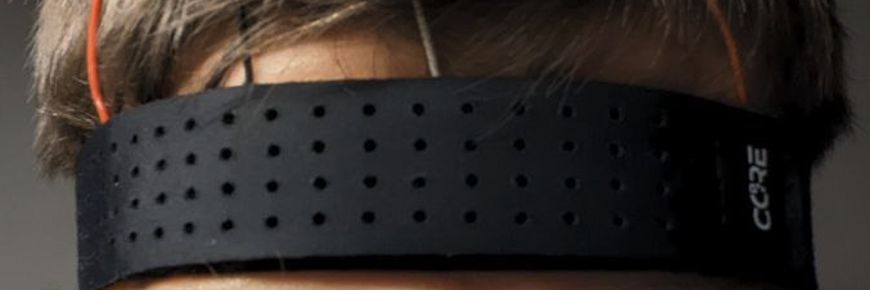
- First montage takes time to learn correct positions (10-20 system) but then being done faster and faster (last night it took less than 5 minutes). One may just use F8 and / or FF with Fpz or T3 as ref and put ground anywhere at lobe and cover with headband, this will work well for someone who have long hairs and require 4 electrodes on a lobe. You catch less features (mostly missing alpha) with that setup, but if your main interest is just good hypnogram it will be enough. It can even be reduced to F8 - Fpz or F8 - T3 and should provide good enough hypnogram with just 3 electrodes on a lobe.
- I dont care too much about impedance, usually it less than 50kOhm for F channels and less than 20kOhm for T and O (due to facial skin being different and more sturdy). Impedance can be easily checked with OpenBCI GUI without additional tools (select Cyton Signal widget). Since OpenBCI have high input impedance and 5-10kOhm rule can be relaxed to about 50kOmh range (read this paper). Impedance also will increase during night due to skin sweating. For 5 nights i just looked at signal in GUI before taking off dongle and all 5 nights it was good after initial montages, so might not need to spent time check it after some nights.
- I used Eneloop AA 1900 mah rechargeables with SkyRC MC3000 charger. After some time i've switched to USB Lipo v1.2 Charger with 3.7V Li-Ion 2500mAh battery
- I start session from GUI and then pull dongle off, which results in session start time saved in OpenBCI session folder. In the morning i turn device off and take out sd card which have no timestamps in it but since we have started session from GUI date can be taken from GUI session folder, allowing to align raw data to real clock. After some time i made a script to start a session without GUI.
- I use Shimmer3 for nightly ECG recordings (mostly for HRV during deep sleep) but OpenBCI allow us to record ECG in addition to EEG in a single device with both signals synchronized (i dont need sync and prefer short and less disturbing wires, so i keep using Shimmer for ECG). I shake both devices few times before bedtime and just after i wake up, to make future sync by aligning accelerometer data possible.
- Looking at this it is clear to me why wrist / finger and other non-EEG wearable not able to provide good enough hypnogram: even EEG from different areas not perfectly agree because represent different brain activity and we need to measure from multiple brain areas, how can we expect good results from a proxy signal measured from a single place located far away from brain?
- I've tried Grass EC2 conductive cream and decided to keep using Ten20. EC2 Cream is good for a sleep study, but not for daily use-case - it is harder to clean it up from skin / electrodes and there a lot of cream residue left on headband in contrast to Ten20 paste. I will use EC2 to collect data from friends, but not for personal daily use.

- I've tried Natus Gold Cup electrodes but didnt notice any significant signal quality improvement compared to the ones from OpenBCI store. Going to try Ag/AgCl soon and will update.
Parts list:
- OpenBCI Cyton in plastic case (Daisy / Ganglion should also work, but Ganglion have only 4 channels; Daisy costs x2 and 16ch for daily sleep PSG is overkill) with 4 AA battery pack and PC dongle (all should come with board)
- 5-8 1.5 meter gold cup electrodes (10mm cups, lasts ~2 months) with dupont connector. In the morning i put them into tap water and after 1-2 hours paste dissolve in water and electrodes become clean. After that I dry them with napkin and leave until evening.
- Ten-20 conductive paste. 114g lasts ~3 months.
- Any elastic headband to cover electrodes. Wash every week or wipe with alchohol
- To charge device like a phone I use USB Lipo v1.2 Charger with 3.7V Li-Ion 2500mAh battery (enough for a full night).
- Bag of your choice. I use a Eagle Creek Money Belt
Code:
- I made a version of OpenBCI firmware with additional SD card features - LED blinking during sd card write and increased sampling frequency (500Hz and more). To flash you go through official OpenBCI Cyton guide the only difference is that you use my github fork OpenBCI_Cyton_Library instead of official one (P.S. use Windows for that, i was not able to flash it from m3 macbook).
- I made 2 scripts. First one starts session and saves session start time in sqlite db file to allow future enrichment of sd card data with timestamp after recording complete (device doesnt have internal clock). Second one converts TXT recording file from SD card to BDF with raw ADC values and CSV with uVolts with data from session start script (start time, channel setup etc).
- Initial setup may take some time, but after that it will require a little time to start session and get timestamped raw data from device, usually just run python3 start_session.py and after session is done insert sdcard and run python3 sd_convert.py to get output BDF/CSV files